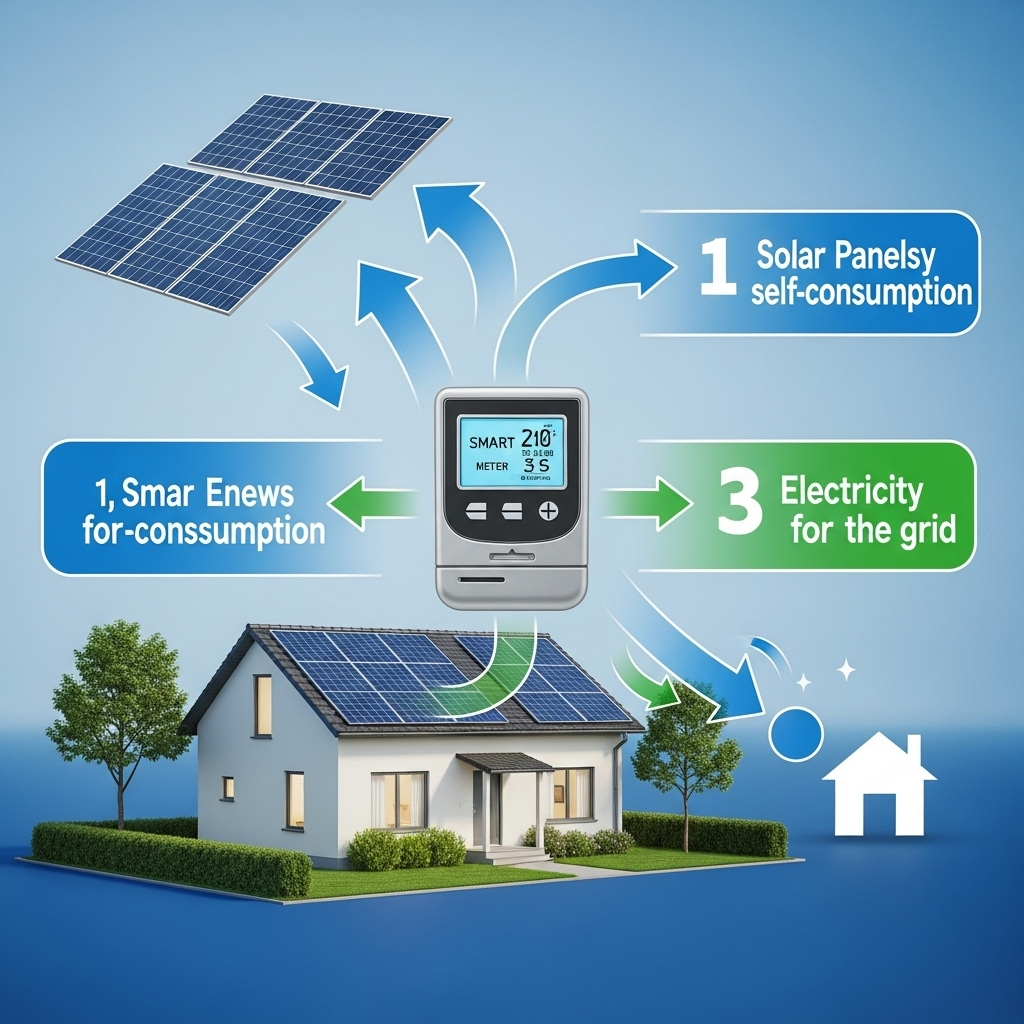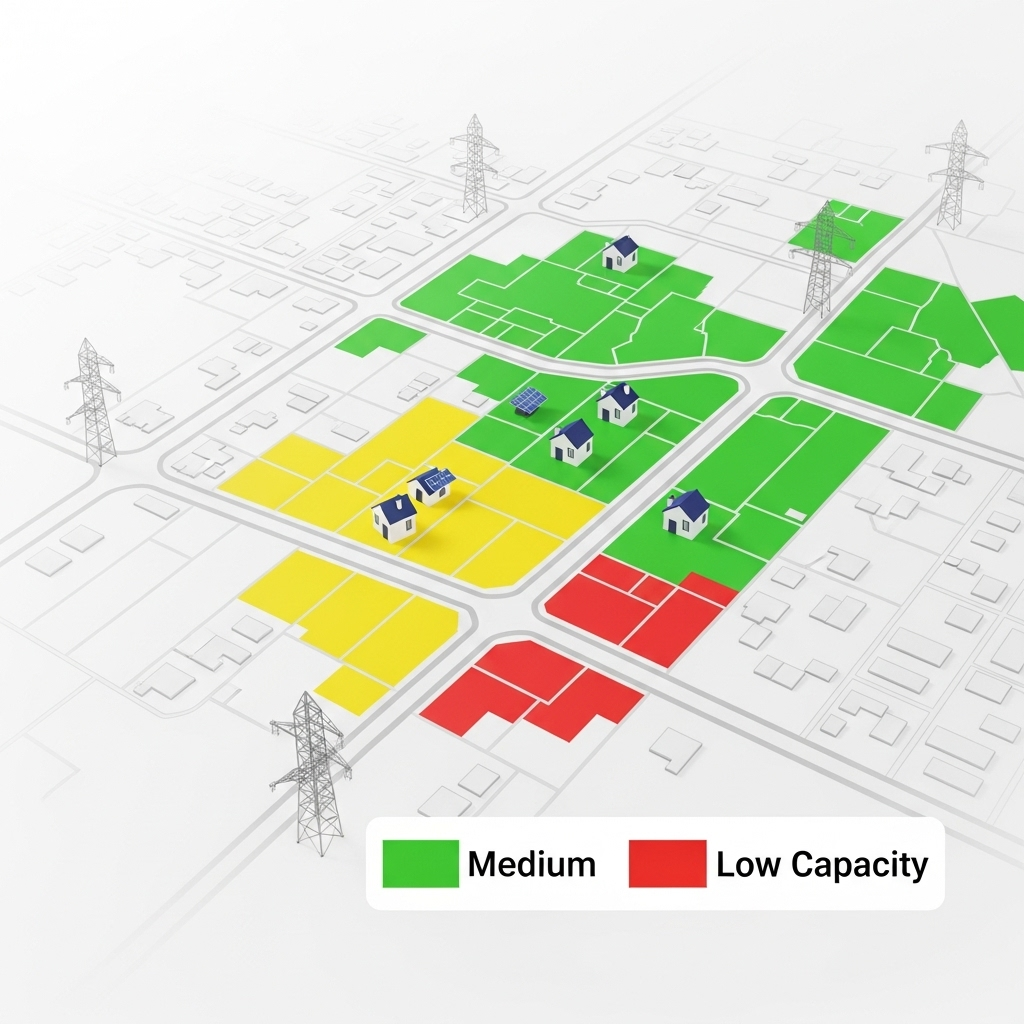Executive Summary
- Zero-export (non-export) configurations let PV proceed on saturated circuits by enforcing no reverse power flow at the point of common coupling (PCC).
- Modern inverters and controllers implement real-time active power limiting and verify it via utility-approved tests, aligning with functions described in standards such as IEEE 1547-2018 and certification regimes derived from UL 1741.
- Pairing PV with right-sized storage converts curtailed kWh into evening self-consumption, stabilizes site demand, and reduces feeder volatility.
- To get approved, document PCC metering logic, fail-safe behavior, and setpoint governance; pilot with a conservative cap (e.g., 95–98% of measured load) and step up after data validation.
Why Feeders Become “Constrained”
Distribution circuits were built for one-way power. As PV penetration rises, reverse flow can push voltage above statutory limits and stress protection settings. Hosting capacity is the practical headroom before those limits are exceeded. The IEA and NREL both highlight voltage rise, transformer loading, and protection miscoordination as chief constraints under high PV penetration.
What “Zero-Export” Really Means
Zero-export systems continuously measure real power at the PCC and keep it ≤ 0 kW export. They do this by:
- Sensing: CTs or revenue-grade meters measure three-phase power at the service entrance.
- Control: The controller issues a dynamic active-power setpoint to the inverter (or plant controller) every 100–500 ms.
- Response: The inverter curtails to match on-site load; if load drops suddenly, output ramps down fast enough to avoid any net export.
- Fail-safe: If sensing or comms fail, the system defaults to a conservative ceiling (e.g., minimum output) to preserve non-export.
Zero-Export vs. Net Metering
| Dimension | Zero-Export Interconnection | Standard Net Metering |
|---|---|---|
| Grid Impact | Prevents reverse flow; lowers feeder volatility. | Can exacerbate voltage rise on saturated circuits. |
| Approval Likelihood | Often approvable even where new exports are paused. | Often denied on constrained feeders. |
| Value Stack | Self-consumption; demand reduction; resilience with storage. | Self-consumption plus export credits. |
| Excess PV | Curtail or store in battery. | Export for credit. |
| Complexity | Requires export-limiting controls and documented fail-safes. | Simpler inverter setup. |
Design Playbook (What Gets Approved)
PCC Control Logic
- Setpoint Method: Cap inverter output to min(load, PV) so PCC export ≤ 0 kW. Use rolling windows (e.g., 1–3 seconds) to filter noise but retain fast curtailment.
- Headroom Margin: Operate with a small safety buffer (e.g., target −0.1 to −0.5 kW at PCC) to absorb sensor latency.
- Ride-through: Implement ramp-rate limits and high-frequency response consistent with functions described in system-integration guidance.
Verification & Safeguards
- Witness Test: Demonstrate step-load changes (±25–50% site load). Show no positive export at 1-second resolution.
- Open-Loop Failure: If CTs or communications fail, inverter goes to a fixed non-export safe cap (or zero output) until alarms are cleared.
- Tamper Controls: Lock setpoints, log changes, and provide read-only access to the utility during the trial period.
Storage to Monetize Curtailed kWh
Storage transforms non-export from a constraint into value:
- Charge Window: Absorb midday PV that would be curtailed.
- Discharge Strategy: Serve evening load, shave demand charges, and reduce feeder peaks.
- Right-Sizing: As a rule of thumb, battery power ≈ 30–60% of PV nameplate and usable capacity covering 2–4 hours of expected curtailment. Validate with interval data.
Economics (First-Principles View)
Without export credits, returns come from avoided purchases and (for C&I) demand reduction. Adding storage raises capex but captures curtailed energy and mitigates tariff risk. In my project reviews, zero-export unlocked interconnection where the counterfactual was “no project,” producing attractive IRRs despite modest curtailment, especially under steep evening tariffs.
Disclaimer: Informational only, not financial advice. Validate with your utility, installer, and advisor.
Implementation & Approval Workflow
- Pre-screen: Request feeder hosting-capacity data or a quick screen from the utility.
- Submit Non-Export Package: One-line diagram, CT placement, control narrative, fail-safe states, event logs, and certificates (e.g., UL-derived inverter listing).
- Pilot & Telemetry: Commission with conservative caps; share PCC data for 2–4 weeks.
- Optimize: Tighten headroom; enable time-of-use charging for storage.
Risk Register (and How We Mitigate)
- Momentary Export from sudden load drops → fast curtailment plus small negative setpoint margin.
- Sensor Drift → periodic meter validation; alarms on offset.
- Comms Loss → fail-safe non-export cap; local watchdog timers.
- Policy Changes → non-export agreements tend to be durable; document controls and performance data.
Frequently Asked Questions
Is a zero-export system off-grid?
No. It remains grid-connected for reliability and reference, but it blocks export at the PCC.
Can I add a battery later?
Yes. Storage is the most effective way to capture energy that would otherwise be curtailed.
Will I still have a utility bill?
Yes. You pay for residual imports and fixed charges. Zero-export reduces, not eliminates, imports.





Leave a comment
All comments are moderated before being published.
This site is protected by hCaptcha and the hCaptcha Privacy Policy and Terms of Service apply.